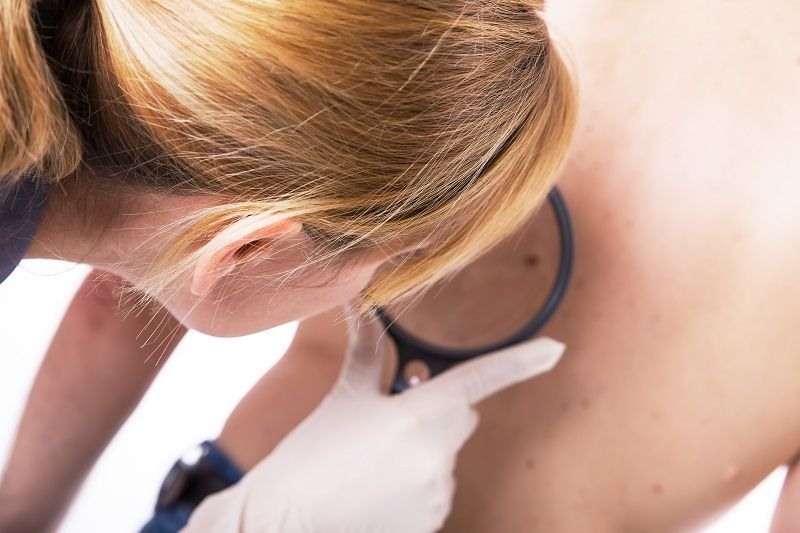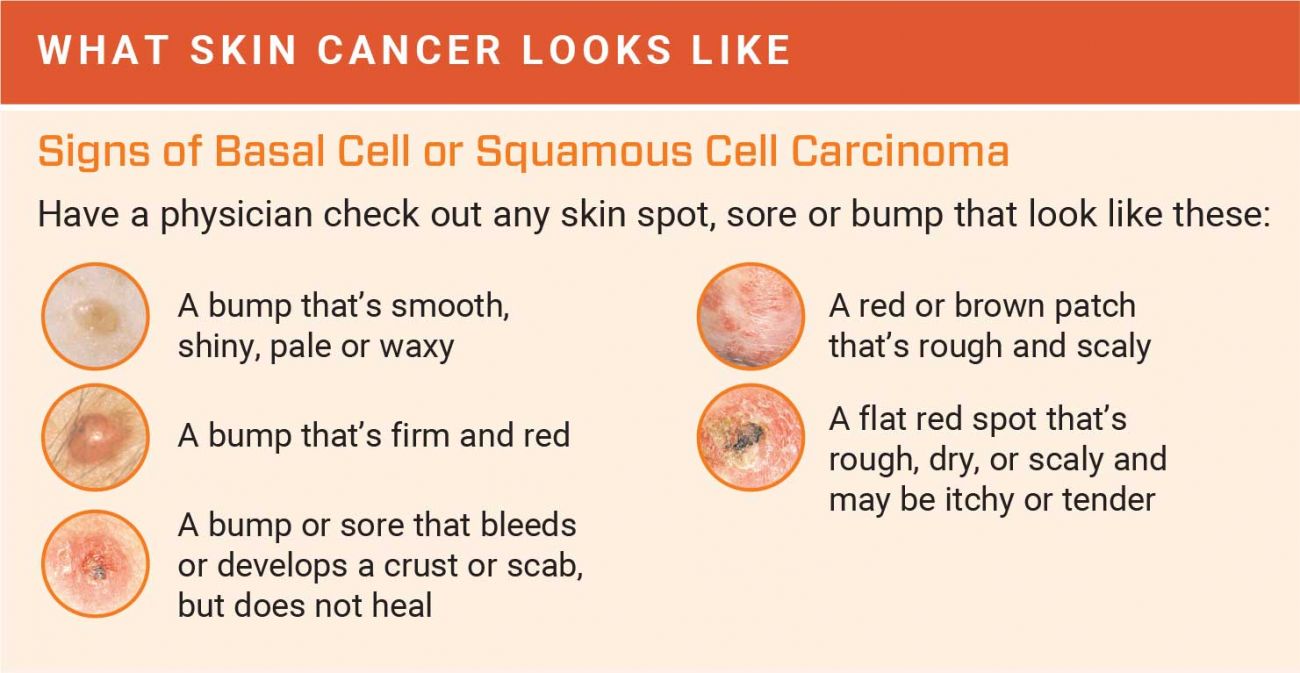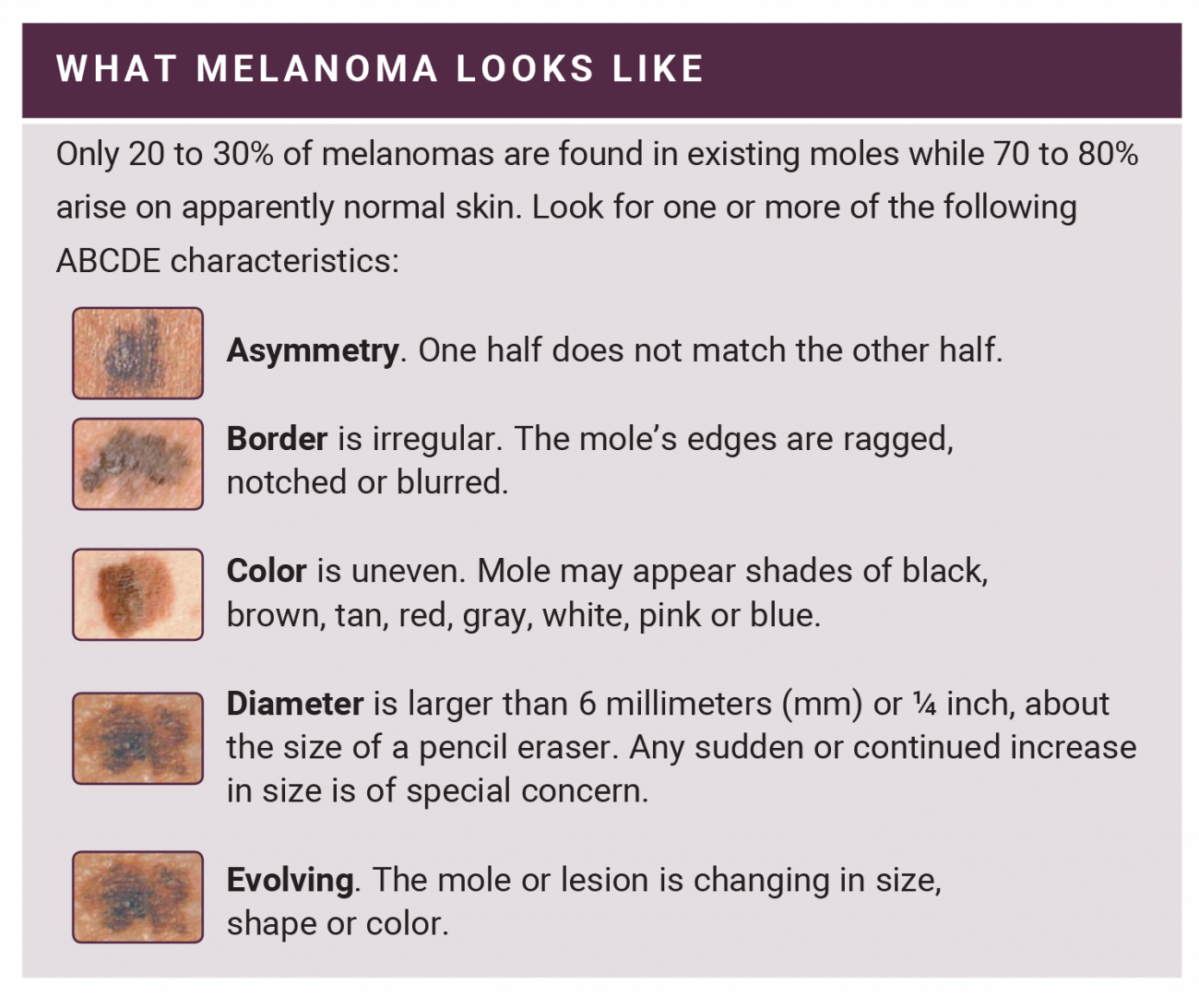When it comes to skin cancer, we have some good news and some bad news.
First, the bad news: skin cancer is the most commonly diagnosed cancer in the United States. Each year, nearly 5 million people are treated for skin cancer, and in the last three decades, more Americans have had skin cancer than all other cancers combined.
But here’s the good news: You can often see the early warning signs of skin cancer...without an x-ray or blood test or special diagnostic procedure. If you know what to look for and take action when you see it, most skin cancers can be detected and treated at early stages, when they are most curable.
Even for melanoma, a more dangerous skin cancer type that is more likely to spread to other body areas, the five-year survival rate is 99% for people whose melanoma is detected and treated before it spreads to the lymph nodes.
How Can I Detect Skin Cancer?
The first answer is to simply look at your skin. Because you see your skin every day, you are detector number one. By knowing what is normal for your skin, and then thoroughly inspecting it on a regular – usually monthly – basis, many skin cancers can be self- detected.
When examining your skin, take note of all existing spots, moles and freckles on your skin, so that you’ll know when changes occur or a new one appears. You can track these easily with this body mole map from the American Academy of Dermatology. Stand in front of mirror and examine your front and back, head to toe. Bend your elbows and look carefully at your forearms, palms and the back of your upper arms. Use a hand mirror (and ask someone for help) to check the back of your neck, scalp, buttocks and other hard-to-see places. Don’t forget the bottoms of your feet and between your toes.
What Should I Look for When Checking my Skin?
Look for any new moles or changes in your skin, especially any of the following:
- A new lump, growth or spot
- A change in size, shape, and/or color of an existing mole, lump or growth
- A sore that doesn’t heal
- A red or brown patch that’s rough and scaly
- A pink pearly bump that bleeds easily
- Any mole or spot that is asymmetrical, or has an irregular border or uneven color
- Any mole or spot larger than ¼ of an inch (size of a pencil eraser)
Should I Use a Skin Cancer Detection App?
Anything that reminds you to look for signs of skin cancer is a good thing. However, some smartphone apps claim to be able to assess certain skin changes and inform individuals whether such changes warrant a visit to a dermatologist for further analysis.
Thus far, the accuracy of these is not high enough and relying solely on an app, rather than on your own observations and visits to a doctor, you could put yourself at risk by delaying a visit to the doctor when one is warranted. In one recent study, the most accurate skin cancer detection app missed almost 30% of melanomas, diagnosing them as low-risk lesions.
However, these apps are evolving, and one day they could become part of the arsenal to help detect skin cancer. Smartphones can be useful in terms of telemedicine. For instance, in locations where dermatologists may not be readily available, a local physician can send a photo of a suspicious mole to a dermatologist and based on visual inspection and communication with that physician, determine what steps to take next.
Can Blood Tests or Scans Detect Skin Cancer?
Currently, blood tests and imaging scans like MRI or PET are not used as screening tests for skin cancer. However, some national studies are underway to determine if concentrations of skin cancer DNA can be detected by blood tests. Occasionally, imaging detects signs of advanced disease. Sometimes, skin cancer that has spread to internal organs is detected incidentally when a patient is undergoing an imaging study such as MRI or PET scan for unrelated conditions.
What Should I Do if I Have a Suspicious Spot?
Make an appointment with your physician or a dermatologist as soon as possible. If your physician sees something of concern, he or she will usually refer you to a dermatologist. While there are sometimes waiting lists for routine dermatology appointments, in cases where skin cancer is suspected, most dermatologists, including those at Roswell Park, will get you in for a screening as soon as possible.
As part of the physical exam, dermatologists use a dermatoscope, a special magnifying lens and light source held near the skin. If an area is suspicious, the physician will take a biopsy, removing all or part of the abnormal area for examination by a pathologist. At Roswell Park, our dermatopathologists — pathologists who specialize in skin cancers — conduct the laboratory examination and testing of the tissue. The biopsy is usually a minor procedure that includes numbing the area to be tested.
If the diagnosis is melanoma or certain types of squamous cell carcinoma, which have a risk of spreading, additional testing may be required to learn whether the cancer has grown deeper in the skin or has spread to lymph nodes or other parts of the body. These tests may include blood tests, imaging such as MRI, CT or PET scans or procedures, such as lymph node biopsy or removal.
Am I at Risk for Skin Cancer?
Anyone can get skin cancer, regardless of skin color. However, some factors increase your risk, including:
- A personal history of skin cancer
- Skin that burns, freckles, reddens easily, or becomes painful in the sun
- Blue or green eyes
- Blond or red hair
- Unprotected exposure to sun
- A history of indoor tanning
- Certain types and a large number of moles
- A family history of skin cancer
- Having had a lung, heart, kidney, pancreas or liver transplant
Should I Have Routine Skin Cancer Screenings?
While many routine cancer screenings, such as colonoscopies and mammograms, are recommended when a person reaches a certain age, there are no widely adopted age standards for dermatological screenings. Most primary physicians will perform a quick skin check at a routine physical, but we recommend that those with a higher risk for skin cancer have a thorough skin screening by a dermatologist at least once a year. This includes anyone with:
- A family history of melanoma in two or more blood relatives
- Multiple atypical moles
- Numerous actinic keratoses (precancerous lesions that are pink rough bumps or scaly patches of skin on sun-exposed areas)
- An organ transplant
How Can I Prevent Skin Cancer?
For all types of skin cancer, the first lines of defense are awareness and prevention. Prevention steps center on avoiding ultraviolet radiation exposure from both sunlight and tanning beds. This means staying out of the sun, especially when the sun’s rays are strongest, between 11 a.m. and 3 p.m.; using a broad-spectrum water-resistant sunscreen with SPF of at least 30 and covering exposed skin with protective clothing when outdoors, even on a cloudy day.



